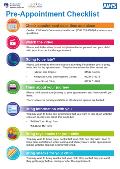1. We will need to gather information from both you and your child’s teachers/ school. We usually start by sending questionnaires to both you and the school.
2. We will then usually ask for a face to face appointment with you and your child where we will ask for quite a lot more information including what your child was like at an early age, and finish with what their current difficulties, as well as strengths are. We will also ask about any other problems they have or have had, particularly around the time of birth.
3. We will also examine your child including taking their weight and height measurements, pulse, listen to their heart and take their blood pressure. We will then use all of this information to see if your child meets the ‘diagnostic threshold’ for ADHD.
- That means we will consider all the information we collect from you, your child and your child’s school to decide if the type of difficulties and the frequency of difficulties that your child has is enough to say their challenges are caused by ADHD.
- We use fairly strict criteria to diagnose ADHD. The specific criteria we use are internationally recognised and referred to as ‘DSM-5’ (or occasionally ‘ICD-10’) diagnostic criteria for ADHD (https://www.cdc.gov/ncbddd/adhd/diagnosis.html)
- We will also need to see that your child has the same type of challenges in more than one area (for example at home and at school), and that they have been having problems from a relatively young age.
What have we learnt and what do we need to do next?
At the end of the assessment process (there may be more than one appointment), and once we have reviewed the information gathered from various sources, we will have a better understanding of your child’s:
- Strengths and needs
- Behaviours and skills
- Interests and difficulties
We will then arrange an appointment to discuss your child's needs and behaviour, and whether they meet the criteria associated with the condition that we were assessing for. Some children do not fulfil the criteria for a specific neurodevelopmental diagnosis. If your child does not receive a specific diagnosis, we will discuss the reasons with you and, if we can, give you another explanation for your child’s difficulties.
 Either way we will provide information to help you find appropriate ongoing support and will give you recommendations for any specific issues you’re experiencing.
Either way we will provide information to help you find appropriate ongoing support and will give you recommendations for any specific issues you’re experiencing.
You are welcome to invite a member of staff from nursery/school or a friend/colleague or family member if you think their support will be helpful. Please click on the link for
Pre-Appointment Checklist and further information about appointments.
A guide to ADHD for Parents and Families
What do you think of this Neurodiversity Support Pack? - please let us know if there is anything we can improve on or if you have any suggestions for content by clicking on this link
How to use the Neurodiversity Support Pack
All the pages in this pack can be translated into your native language as text or audio via our Recite feature which you will find at the top of each page. The translated page can also be downloaded. More information about using our translation service can be found by
clicking here.